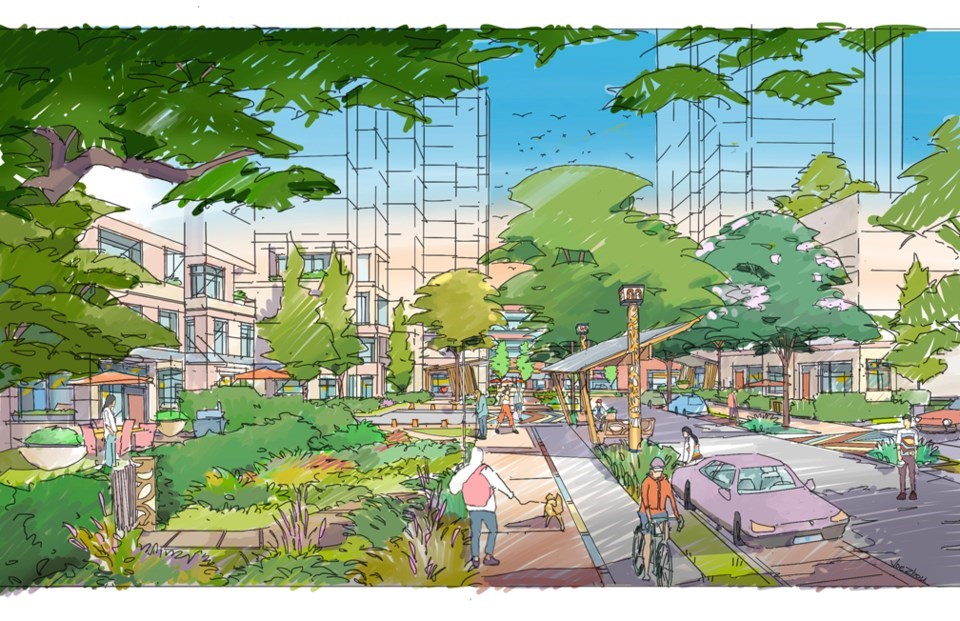Editor:
Re: Letter: Willingdon Lands megaproject will worsen congestion
How unfortunate that this Letter to Editor fails to acknowledge the City of Burnaby’s brand-new and progressive Citywide Transportation Plan that provides abundant solutions to the rearward looking thinking evident herein by those opposed to pretty much everything that would make Burnaby better.
As a semi-retired transportation planner and continuing long-time advocate for advanced mobility solutions, as early as 2015 as part of the Brentwood Town Centrer plan did I repeatedly urge Council to pursue a north-south rapid-transit solution. The public record at Council, including multiple letters to editor here in the Burnaby Now identify what is possible if we have some imagination and commitment to sustainable development. These ideas and efforts are not just my own but many others that have recognized that the Willingdon corridor is ideal for such a solution, especially as the right-of-way is plenty sufficient to accommodate smarter solutions. Even better news that we may see within three to five years an early start with TransLink just announcing a Bus-Rapid-Transit project that will start at Park Royal in West Vancouver connecting through to Metrotown. As further development occurs on Hastings, along Willingdon, and with the further build-out of Metrotown, one day soon we can envisage fixed rail of some type, preferably ground-oriented, that will serve the growing population. This Council has seen fit to adopt this vision and I for one applaud their courage and willingness to pursue difficult but vitally necessary solutions to tackle the Climate Emergency and Housing Crisis.
It is also unfortunate that due to a pressing engagement elsewhere, I was unable to participate in the Public Hearing as I dearly wished to. Had I done so, and no new information exists in what comes next, I would have simply highlighted that the Willingdon MasterPlan contains an explicit commitment to positively respond in site design with respect to rapid transit improvements when they arrive. This is excellent news, and Council should be emboldened to recognize that this particular site is a critical element of justifying the sizable investments required to make rapid transit in this corridor work. In fact, for Council to approve this MasterPlan, giving due consideration to the multiple views to achieve a balanced outcome, in my estimation will be pivotal in the dialogue with both the province and federal government for funding such a sustainable mobility investment.
And of course we must respect our collective reconciliation commitments that also means putting dollars behind our statements for which I can think of no better means, transportation-wise, than to serve the Willingdon Lands with high-quality, low-polluting rapid transit. What is also forgotten is this MasterPlan will not be implemented overnight, and that over the next few decades the opportunity exists for future Willingdon rapid transit to influence the ultimate site design that makes the current plan just a work-in-progress; thus let’s not pretend that congestion will worsen when in fact rapid transit is very much in the cards for delivery aligned with what may happen on the west side of Willingdon.
But if we take this NIMBY perspective “megaproject will worsen congestion” at face value then where in Burnaby will anything be done? Nowhere is the answer as the circumstances across the City is that we must find partners to implement better mobility solutions, or stop all development everywhere. Even worse, those advocating for nothing to happen here forget the province’s central technical education campus has long existed on the eastside of Willingdon, namely BCIT. North-south rapid-transit will also better serve these students, faculty and encourage businesses in the vicinity to take advantage of a cooperative on-the-job learning environment.
Respectfully, and in my extensive experience working globally we must better use the scarce land resources within the core of the urban areas in British Columbia, which then means we can put less pressure on rural areas that are very expensive to serve and frankly far from sustainable. Burnaby is not an island, and what we do has broad reaching implications which are crystallized in the Metro Vancouver regional growth targets that multiple Burnaby Councils have repeatedly committed to that the province carefully watches over to ensure the many functions of government can reasonably be achieved.
In short, the Willingdon Lands MasterPlan is a testament to responsible and sustainable development planning, and I can’t wait for the day that the new residents and businesses in this area start their contribution to making Burnaby better.
Joe Sulmona
Burnaby



